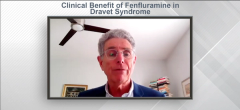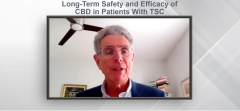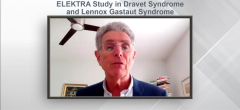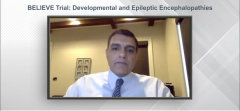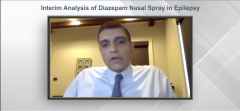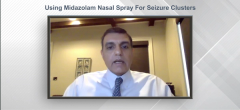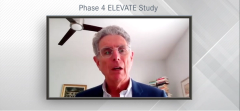
Using Midazolam Nasal Spray for Seizure Clusters
Episodes in this series

Amit Verma, MD, provides insight on a post hoc analysis of an open-label extension, assessing the impact of midazolam nasal spray treatment on the time to return to full baseline functionality in seizure clusters.
Amit Verma, MD: Midazolam nasal spray became available this year under the trade name Nayzilam. This is 1 of 2 medications that are available for treatment of acute repetitive seizures. The delivery system is a nasal spray. We had this almost 2 decades before Diastat became available in the late 1990s. Almost 2 decades later we have the availability of nasal sprays. The concern with giving somebody a benzodiazepine dose or repeat doses would be whether it is going to cause increased somnolence. Yes, you were able to stop the seizures, but what is the functionality of that person going to be 24 hours later? Is that person going to be very somnolent and functional, or are they able to return to baseline functionality?
The way the study was done was, if someone was entering their cluster of seizures, they were given Nayzilam nasal spray at the 5-mg single dose. If the seizure didn’t stop within the first 10 minutes, or if it stopped and they had another, then they got a second dose of Nayzilam. They compared getting a single dose of Nayzilam vs getting 2 repeat doses of Nayzilam. Then they looked at functionality at 24 hours.
They found that the functionality at 24 hours was almost identical in both groups. Whether someone receives a single dose or 2 doses, about 94% plus patients were able to return to baseline functionality within 24 hours. If someone is having a seizure, and the first dose of Nayzilam didn’t work in terms of stopping that seizure cluster or that first seizure, then it’s very safe to go ahead and give that second dose. You can expect that the person’s chances of returning to baseline functionality are going to be very similar within that 24-hour period.
The clinical significance for this is that if the patient does receive a second dose, they’re going to return to baseline just like someone who received a single dose of the medication. One of the benefits to giving a treatment for acute repetitive seizures would be to help with the patient’s quality of life and get them back to baseline quickly. This study shows that that can be accomplished.
Newsletter
Keep your finger on the pulse of neurology—subscribe to NeurologyLive for expert interviews, new data, and breakthrough treatment updates.

